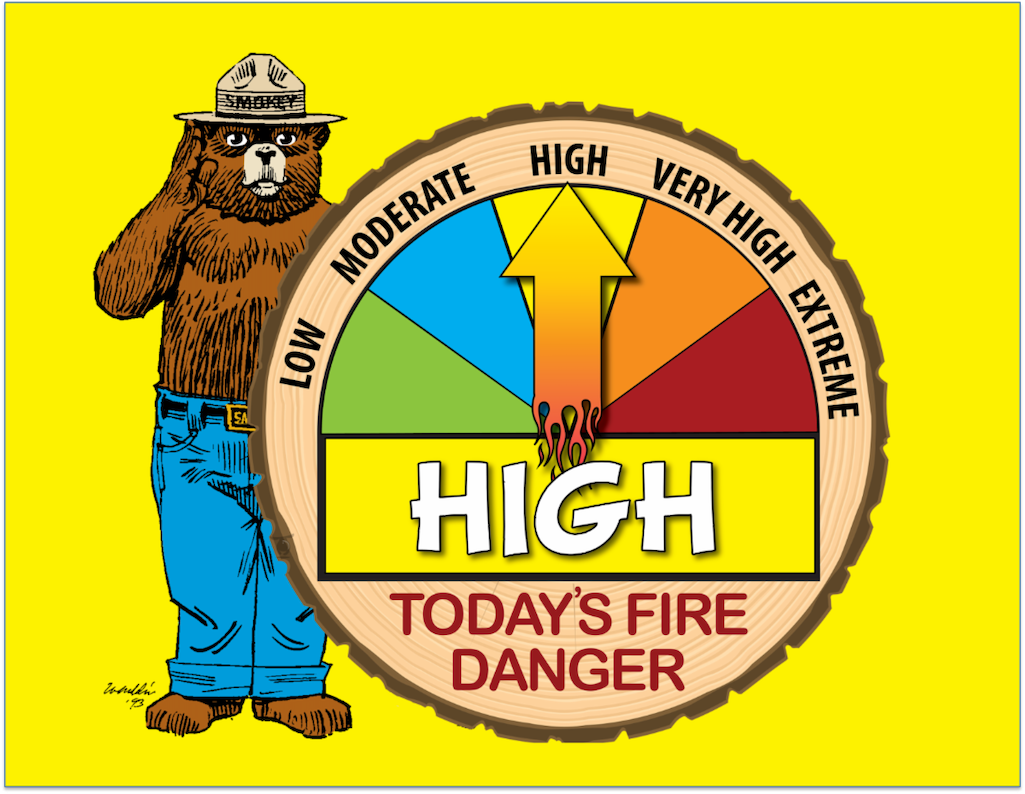
Fire danger for Grand Teton National Park has increased to "high" due to hot, dry conditions and weather/USFS
Fire danger in Grand Teton National Park in western Wyoming has moved to "high" as unseasonably hot, dry weather holds sway over much of the West.
Grand Teton Interagency fire managers have also posted that fire danger rating for the Bridger-Teton National Forest, National Elk Refuge, and remaining portions of the Teton Interagency Dispatch area. The potential for fire activity has increased due to summer curing of vegetation combined with hot temperatures and dry, windy conditions.
According to the National Interagency Fire Center, "33 large fires have burned more than 360,000 acres in 10 states. Eleven new large fires were reported (Tuesday). Wildland fire activity increased in the Northern Rockies and Rocky Mountain areas where seven new large fires were reported. More than half of the 33 uncontained large fires are in the Southwest and Great Basin areas."
As the Independence Day holiday approaches, visitors to Grand Teton and local residents are reminded that fireworks are not permitted in Grand Teton National Park, on the Bridger-Teton National Forest, or within the National Elk Refuge. The use of fireworks is illegal in Teton County, Wyoming, unless permitted through the special-event process through either the town of Jackson or Teton County. These fireworks regulations play a critical role in fire prevention.
A high fire danger rating means fires can start easily and spread quickly. Unattended campfires and brush fires are likely to escape and can become serious and difficult to control. When determining fire danger, fire managers use several indicators such as the moisture content of grasses, shrubs, and trees; projected weather conditions including temperatures and possible wind events; the ability of fire to spread after ignition; and availability of firefighting resources across the county.
Grasses and sagebrush in the area may still look green, but the moisture content is changing rapidly allowing them to carry fire. Dead and down logs and branches in forested areas are already dry and easily combustible. The most recent precipitation was May 21-23 and the effects of that are long gone. The weather forecast indicates no significant precipitation in the next 10 days. All vegetation will dry and cure as temperatures remain hot and windy conditions exist.
In areas where campfires are allowed, fires should never be unattended and must be completely extinguished. The charred remains of a campfire must be repeatedly doused with water and stirred into the campfire ring for it to be completely extinguished. All embers and logs should be broken up. Campers should “cold trail” the remains of the fire, which refers to carefully placing the back of your hand near the ashes and campfire debris to feel for any remaining heat before leaving the site.
Visit the Teton Interagency Fire web site at TetonFires.com to learn more about fire safety and what fire regulations may be in place. To report a fire or smoke in the immediate area, call the Teton Interagency Fire Dispatch Center at 307.739.3630.



Add comment